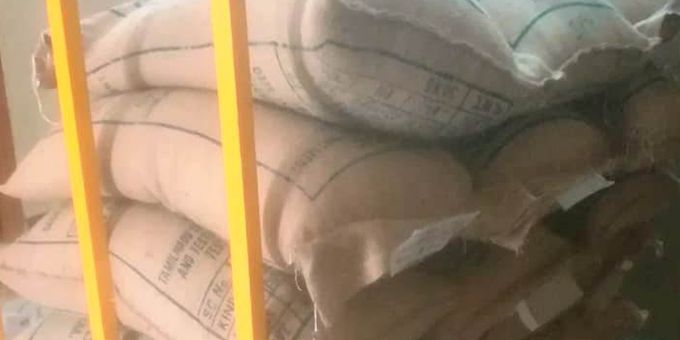The Directorate of Seed Research under Indian Council of Agriculture Research in collaboration with MIM, between 2011- 2016 undertook studies on pre-treatment of seeds to Pulsed Magnetic Fields (PMF) involving several Indian agricultural universities.
 Magnetic Field Treatment of Seeds: A Novel Agritech Initiative
Magnetic Field Treatment of Seeds: A Novel Agritech Initiative

Dhilip Sampath and S.Narayanan | Madras Institute of Magnetobiology
Amongst the many lines of research, influence of magnetic field (static and time-varying – natural and manmade) on seed, plant growth and development is shaping into an exciting arena. The first report on effect of magnetic fields on plants was made by Savostin in1930. Following it, Krylov and Tarakonova (1960) proposed magnetic fields influenced seed germination. Since then interest and importance to understand behavior of magnetic field on germination kinetics and plant growth has been on the rise.
In India, Madras Institute of Magnetobiology (MIM), a scientific research organization has been devoting to studies on this new discipline - since the early 1990’s. Broadly, studies involve on possible influence of extremely low frequency (ELF) - ultra low intensity magnetic fields in plant life. The technique involves pre-sowing exposure of dry seeds to PMF using Controlled Magnetic Field Enclosures (CMFE).
.png)
Agrisciences Program - The Agri-sciences program of MIM has executed several collaborative R&D trials/studies, since 1993, employing low-intensity magnetic fields in pulsed form (PMF) as a catalyst for improving crop productivity.
The program results revealed plant performance on several crop varieties optimized under specific “frequency-intensity” combinations of PMF’s, identified through standardization protocols designed for the trials.
Interpreting the results of Agrisciences program along with similar research has provided an evidentiary basis for parameters that influence the beneficial effect of pre-sowing seed treatment to magnetic fields apart from seed material and agroecological conditions. Even a germinating model called “hydrothermal magnetic time constant” for pre-sowing exposure to magnetic fields has been proposed (T.S.Mahan et al, 2012) for a variety of seed population.
Studies on bio-stimulatory effect due to pre-sowing treatment of seeds to magnetic field have revealed a variety of sensitive cell-physiologic end-points;
-
Stele and Xylem vessels have been shown to develop and grow more and parenchyma cells larger in magnetic field treated seeds suggesting specific magnetic field intensities improve significantly seed germination and growth.
-
Magnetic field treatment plays an important role in enhancement of protein, mineral accumulation and enzyme activities, which leads to increase in growth and yield.
-
Strong correlation has been established between magnetic field effect and ion transport across cell membrane of seeds.
-
Magnetic field exposure increased the activities of hydrolyzing enzymes which is responsible for quick seed germination, improved seedling vigor and better root characteristics.
-
Accelerated sprouting rate, main shoot length, auxiliary shoot formation have been reported when exposed to electromagnetic field.
-
Magnetic field exposure resulted in plants with enhanced Performance Index (PI).
-
Stimulatory effect of magnetic field on initial water content, age of seed and Reactive Oxygen Species (ROS) production has been studied underscoring the importance of treatment effect on seed germination.
Today, a collection of published literature exists on interactions of magnetic fields in plant systems. They can be largely grouped under;
-
Cellular and Tissue Interactions
-
Membrane properties
-
Molecular Transport
-
Stress and survival
As the body of experimental evidence grows, the interactions reported, as expected, is bound to be more diverse.
All India Crop Research Program (AICRP)
The Directorate of Seed Research under Indian Council of Agriculture Research in collaboration with MIM, between 2011- 2016 undertook studies on pre-treatment of seeds to Pulsed Magnetic Fields (PMF) involving several Indian agricultural universities. The technical program assessed the impact of magnetic treatment on the physiological aspects in various crops.
.png)
Overall, the program results revealed pre-treatment of seeds to PMF led to;
-
Greater seed vigor
-
Good plant growth and development
-
Increase in crop yield recommending technology adoption for low volume crop seeds.
Technology extension efforts with I Support Farming(ISF)
Since 2018, MIM has entered into collaboration with ISF towards promotion of its technological solution – pre-sowing treatment of seeds using Pulsed Magnetic Field (PMF) technique to improve productivity amongst small and marginal farmers. ISF being a recent startup headquartered at Chennai, partners with marginal farmers through exclusive contractual arrangements to help overcome their agribusiness challenges and achieve maximum productivity. With focus on crop feasibility, crop and farm management, being the pilot phase, Magnetic field enclosure to treat paddy seeds using PMF technique has been installed at ISF field station and “treated” seeds distributed in chosen locations to assess its impact. Results indicate, “PMF technique has potential to increase income from cultivation related activities by 20%”.
.png)
With farm level intervention to increase output and market level intervention for better pricing, the collaborative effort has helped build the idea of self sustenance. It is hoped by synchronizing operations at a block level with PMF technique, farm mechanization support, appropriate credit package and better linkages for produce, this effort will help build self reliance with time. Succinctly put, might even hold a key to delivering the promise of improving marginal farmers lives.
A sizeable percentage of India’s population is still dependent on agriculture as a primary means of livelihood of which a fair percentage are marginal farmers. The marginal Indian farmer is in urgent need of new technologies and integrated farming techniques. Cultivable area is reaching its limits, pushing yield increases as a must. Global focus is shifting towards adopting new technologies that can address concerns of bettering yield and environment safety. Studies having shown, seeds exposure to magnetic field as a potentially safe and affordable technology to enhance germination, plant development and crop yield, it is time we consider adopting such newer technologies quickly.
The content & opinions in this article are the author’s and do not necessarily represent the views of AgriTechTomorrow
Comments (0)
This post does not have any comments. Be the first to leave a comment below.
Featured Product

